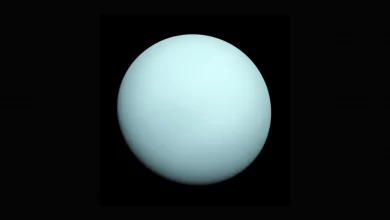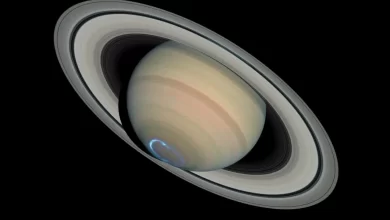The Earth formed approximately 4.7 billion years ago. The shape of the Earth is very close to that of a sphere, but it is not perfectly spherical. It is the fifth-largest planet in size and the third closest to the sun. Because of the presence of water, moderate temperature, and a moderately dense atmosphere containing gases useful in supporting life, it is the only known planet where life is possible.
- Lightning strikes about 8.6 million times every day and about 100 times every second.
- The strongest creature on Earth is the are gonorrhoea bacteria. They can pull 1 lakh times their own body weight. Whereas among all animal species, the Dung beetle is the strongest on the planet. A dung beetle can pull 1,141 times their body weight.
- Relative to our galaxy milky way, the Earth is traveling through space at more than 67,000 mph (107,826 Km/h).
- As an apple falls to the surface of Earth, the Earth falls very, very slightly towards the apple.
- Every day, plants and trees that convert sunlight into energy is equivalent to six times the entire power consumption of all human civilization.
- 99% of all the species that have ever lived on Earth are now extinct. It amounts to be around five billion species that have died out.
- Hawaii has a beach with green sand. It was formed because of olivine – a volcanic rock that smashed into tiny grains. There are three other beaches like this one. The first is in Guam island of united states, the second is in Norway, and the third one is in the Galápagos Islands in the pacific.
- In the last 550 million years, there have been five mass extinction events that have each destroyed more than 75 percent of all species on the planet.
- Some rocks float on water. Pumice stone is hardened volcanic lava. Most of its kind contain air bubbles that it is light enough to float.
- The Mauna Kea Mountain in Hawaii is technically the tallest mountain in the world. The mountain is 10,205 meters (33,480 feet) from its base on the seabed. Around 60 percent of it is hidden under the sea, and the rest does not look very pointy!
- Around one-eighth of the Earth’s surface is a dry desert where there is less than 25 centimeters of rainfall in a year.
- Enough energy reaches the Earth from the sun every second that could fulfill all the power needs of humans for a year.
- The Earth’s crust, which is the solid surface of the Earth that holds the land and sea, is extremely thin. The crust could be anywhere from 30 to 100 km. If we think of Earth as an apple, the crust could be compared to the skin of an apple.
- The Earth’s core depths can be from 2,886 kilometers to the center at 6,371 kilometers (1,794 to 3,960 miles), is predominantly iron, with some contaminants.
- The temperature at the Earth’s center can reach 6,000 degrees Celsius (10,832 degrees Fahrenheit).
- Around 180 million years before, India was an island off the coast of Australia. The Earth’s landmasses slowly move around, at up to 10 cm (4 inches) a year.
- Until roughly 140 million years ago, the Indian Plate formed part of the supercontinent Gondwana together with modern Australia, Antarctica, Africa, and South America. Gondwana broke up as these continents drifted apart at different speeds, this process led to the opening of the Indian Ocean.
- The largest mountain ranges on Earth are under the sea! They form an area called the mid-ocean ridge, which stretches 40,389 miles (65000 km) around the globe running through the Pacific, Indian, and Atlantic Oceans.
- The gases of the Earth’s atmosphere reach up to 700 kilometers (435 miles) high.
- The outermost layer of the outermost Earth is the exosphere. This layer starts at an altitude of about 500 km and goes out to about 10,000 km.
- Under the sea bed, the rocks move around slowly and recycle themselves. It goes back under the surface of the Earth to melt and re-emerge through volcanoes. The entire seabed is renewed 150-200 million years.
- The Atacama Desert of Chile did not received rainfall at all for more than 400 years, between 1570 and 1971.
- A part of the Sargasso Sea in the Atlantic ocean is completely still. The sea is still because seaweed has grown all over its surface, which stops the movement of water.
- The continent of Asia accounts for 30 percent of the Earth’s land but is home to 60 percent of the world’s population.
- During the first 2.7 billion years on Earth, only single cells existed. Then slime moulds, sponges, and other very simple forms of life evolved. Everything else that is now present has appeared in the last billion years.
- There is an island in Greenland named as the warming Island. It got its name because melting arctic ice has uncovered a previously unknown island.
- Out of the 3 percent fresh water in the world, 2.5 percent water is unavailable and is locked up in glaciers, polar ice caps, atmosphere, and soil or lies too far underneath the Earth that can not be affordable to dig out. So only 0.5 percent of all earth water is available as freshwater.
- The inner core of the Earth spins more quickly than the outside one. Every 400 years, the inner core makes one complete extra revolution as compared to the outermost layer.
- The Antarctic ice sheet is one of the two polar ice caps of the Earth. It covers about 98% of the Antarctic continent and is the largest single mass of ice on Earth. It covers an area of almost 14 million square kilometers and contains 26.5 million cubic kilometers of ice.
- If the entire Antarctic ice sheet melted, the sea level would rise by 60 meters (200 feet), leaving all the cities like New York, Hong Kong, and London completely submerged into water.
- One-tenth of the Earth’s surface is permanently under ice, and 90 percent of that ice is found in Antarctica.
- The oldest known rock on Earth is actually from the moon, which was picked up during the Apollo 16 mission. The rock is believed to be 4.46 billion years old.
- If you want to escape the Earth’s gravity, you need to travel at the speed of 11.2 kilometers (6.95 miles) per second. This is known as the Escape velocity.
- The mid-ocean ridge holds more volcanoes than there are on land. Greater than 75 percent of all volcanic activity occurs here.
- Around 450 million years back from now the South Pole was located where the Sahara desert is now.
- There are around 10 million tonnes of gold in the oceans, which is worth $771 trillion, but it is too difficult to extract.
- Some rocks that we find on our beloved planet Earth are, in fact, pieces of the planet Mars that have fallen from the sky in the form of meteorites.
- About 1400 cubic kilometers of water is evaporated each day on Earth. This is about 10,000 times the amount of water consumed by the United States per day
- The core of the Earth is more hotter than the sun.
- The deadliest animal on our planet is the mosquitoes. According to the World health organization, every year, 1 million people lose their lives because of mosquito bites.
- When severe solar storms hit our planet, it loses 100 tons of its atmosphere into space.
- At any given point of time or every second, 1.8 humans die, and 4.2 humans are born every second.
- The Earth’s magnetic field is 150 to 400 times weaker than a fridge magnet.
- If the Earth had no clouds, the sea would have evaporated, and the Earth would have become a barren land.
- There is more water in the Earth’s mantle than in all of its oceans.
- Our planet is tiny in comparison with the rest of the universe – it could fit into the sun 1.3 million times.
- Have you ever wondered why we have tides and waves in the oceans? The reason is the gravity of the moon, which pulls water from the Earth towards it. The sun also plays its part as it helps to move billions of tonnes of water each day.
- The Earth is about 4.543 billion years old. That’s one-third that of the age of the universe, which is 13.5 billion years old.
- The Earth travels at a speed of about 490,000 miles per hour around the center of our galaxy, which means that in one second, you are over 135 miles (217 km) away from where you were, and in one minute, you would have traveled 8100 miles (13035 km).
- Earth is the only planet in our solar system that is not named after a Roman or Greek god.
- Earth is one of the most geologically active planets in the entire solar system, which means that Earth is constantly changing (ocean formation and re-formation, volcanic eruptions, active plate tectonics, etc.).
- It takes about 1.25 seconds for moonlight to reach Earth. Whereas light from the sun reaches in 8 minutes.
- It’s been estimated that Earth sees about 760 thunderstorms every hour.
- Every minute of the day, one billion tons of rain falls on the Earth.
- The fastest winds on Earth are inside a tornado funnel. Winds here have been recorded at 480 to 512 km/h.
- The first man-made object to circle the Earth was Sputnik I, which was launched in 1957 by Russia.
References
- A-z-animals.com(the strongest creature on earth)
- Wikipedia-Extinction(99% of species have got extinct)
- Lovebigisland.com(Beach with green sand)
- Cosmomagazine.com(5 times mass extinction has been happened)
- universityofcalifornia.edu(rocks that float on water)
- Wikipedia-Mauna kea(technically the longest mountain in the world)
- Dkfindout.com(The earths crust)
- Esrf.eu(temperature of earth’s core)
- Wikipedia-Indian Plate
- Sciencedaily.com(Largest mountain range the mid ocean ridge)
- Wikipedia-Atmosphere of Earth
- Universetoday.com(the outer most layer of earth the exosphere)
- Ucmp.berkeley.edu
- oceanservice.noaa.gov(the Atacama Desert)
- Wikipedia-Uunartoq Qeqertaq
- Wikipedia-Sahara
- Columbia.edu(What if all ice sheet of antarctica melted)
- Nsf.gov(One tenth of earth surface is submerged into water)
- Oldest.org(the oldest rock on earth)
- Wikipedia-Escape Velocity(The velocity required to escape earth gravity)
- Theconversation.com(Some of the earth rocks are from mars)
- Madsci.org(water evaporates from earth each day)
- Scientificamerican.com(THe core of the earth is hotter than the sun)
- hardydiagnostics.com(the deadlies animal on earth)
- Spacej15.imanengineer.org.uk(if there were no clouds the earth would have become a barren land)
- Livescience.com(Earth is the only planet that is not named after roman or greek god)
- Phys.org(time takes to reach sun and moon light to earth)
- Wikipedia-Enhanced Fujita Scale(the highest windspeed is in tornado funnel)
- Nssdc.gsfc.nasa.gov(the first man made object to orbit earth)






